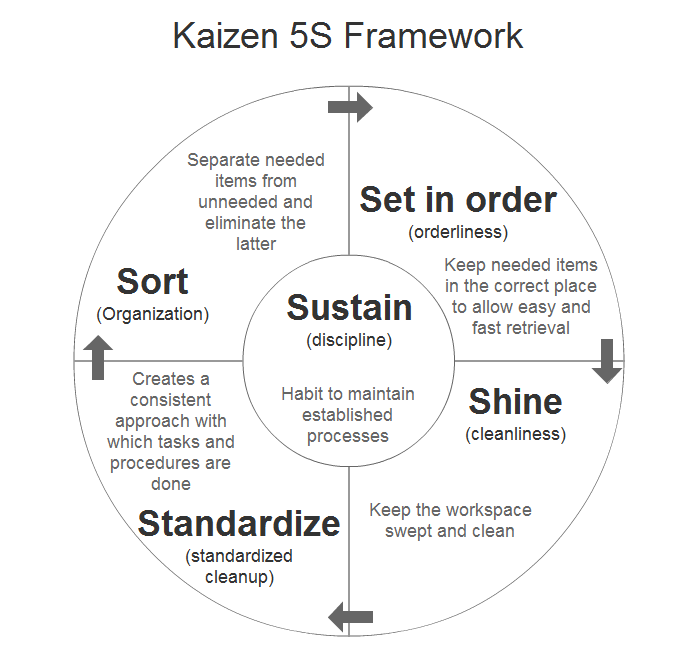CQI Communicator - Q3 Issue July 2020

Welcome to The CQI Communicator, a quarterly newsletter that brings you the latest in continuous quality improvement, project management, and tips/tricks to help you optimize your team's effectiveness,courtesy of your partners in Planning, Assessment & Innovation (PAI). Enjoy!
 Our Pivot: Responding to COVID-19
Our Pivot: Responding to COVID-19
So much has changed—personally and professionally. Let us begin with sincere condolences to those who have lost a loved one or experienced the devastating health consequences of this novel virus. It has forced us to pivot to a new way of life.
Lean principles of process improvement serve us well during a time of crisis. Lean is about shifting how work is performed, reducing waste, and improving the flow of a process. What better time to apply Lean principles than when forced to adjust and adapt to a new environment!
In the March newsletter, we introduced you to PDCA—Plan, Do, Check, Act—an iterative process improvement method that is very effective when implementing change in business and personal practices. What foresight we must have had! Revisit the March issue of The CQI Communicator for a refresher.
Organize with Lean 5S!
Being organized can boost your mood and energy level, especially during challenging times. 5S is a five-step organization technique to reduce waste and optimize productivity by creating and maintaining an orderly workplace or home office. The pillars of 5S are derived from five Japanese words, translated as:
- SORT (Seiri)
Remove all items from the workspace not needed for current production (or clerical) operations:
- Leave bare essentials—“When in doubt, move it out.”
- Keep only what is needed, only in the amounts needed, and only when it is needed.
Note: An effective visual method to identify these unneeded items is called "red tagging", which involves evaluating the necessity of each item in a work area and dealing with it appropriately. A red tag is placed on all items that are not important for operations or that are not in the proper location or quantity. Once the red tag items are identified, these items are then moved to a central holding area for subsequent disposal, recycling, or reassignment.
- SET in ORDER (Seiton)
Arrange needed items by frequency of use and/or location/point of use for easy and immediate retrieval:
- Dedicate a place for necessary supplies or tools.
- Make errors visible (space for missing tools.)
- SHINE (Seiso)
Thoroughly clean and shine the work area>
- STANDARDIZE (Seiketsu)
Standardize the method to maintain the first three pillars to create a consistent approach with which tasks and procedures are done:
- Create a schedule using charts, checklists, and other visual cues.
- Prevent the accumulation of unneeded items and materials from getting dirty.
- SUSTAIN (Shitsuke)
Make a habit of sustaining the previous 4S’s and reviewing standards to avoid falling back to the “old way” of doing things.

Do a little CQI@Home! Give 5S a try in your remote workspace and send us "before & after" photos and a short narrative to fbo-pai@wayne.edu. We'd love to post your 5S pics in our Flickr CQI@Home gallery—sharing your story is sure to inspire others!
Want to learn more? Check out the webinar “The Joy of Tidying Up With 5S & Lean Six Sigma.”
Did You Know…?
The Netflix show “Tidying Up With Marie Kondo” follows the 5S Lean method for organizing. The KonMari method incorporates a sixth pillar – “Spark Joy.”
CQI Connection CoP—What's Coming Up
The CQI Connection is a space for novices and experienced practitioners to learn, share, and access valuable resources related to Lean, Six Sigma, and continuous process improvement methodologies and tools. It’s the home of PAI’s CQI Online Toolkit—full of resources, examples, and templates to support process improvement initiatives and activities.

In the coming months, here’s what you can expect:
- Peer discussions & support
- Monthly process improvement webinars
- A rich media library of photos, podcasts, videos, recorded webinars, and more
- Sharing community ideas & feedback
- Share process improvement successes + lessons learned
We are excited to extend this platform to collaborate with others across the entire Wayne State campus community. Visit the CQI Connection page on the PAI website to learn more and to request membership. (NOTE! — those who have already completed the "Intro to CQI" course have already been given access, so come check out what all is in store!)
Stay tuned right here for future issues of The CQI Communicator!
– Your Partners in PAI